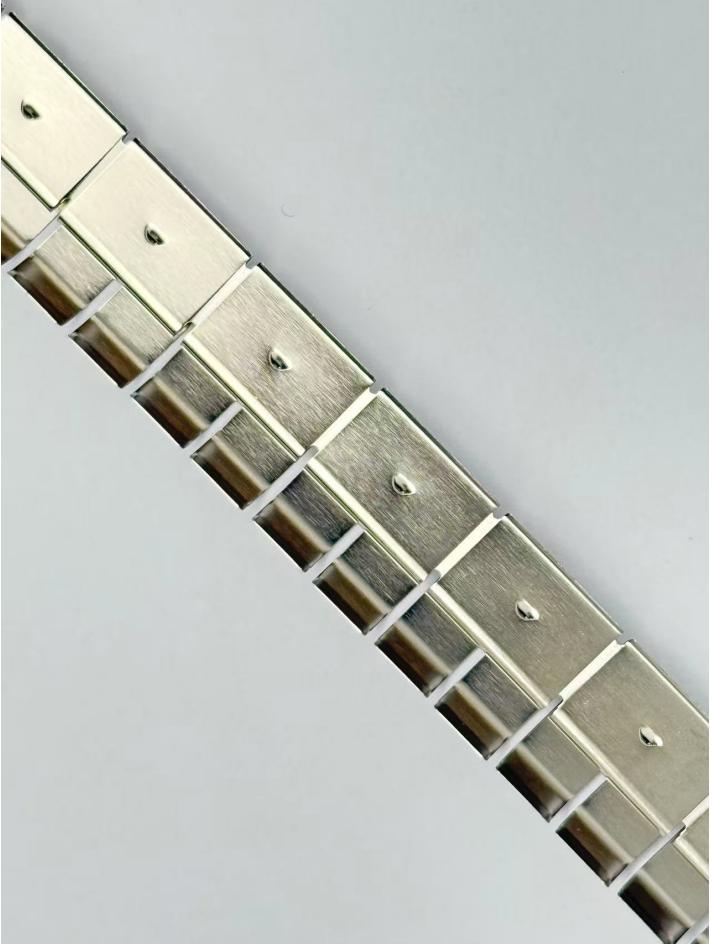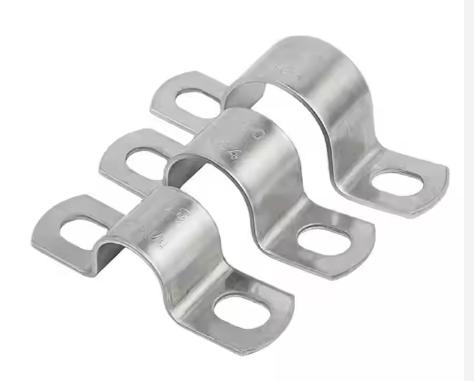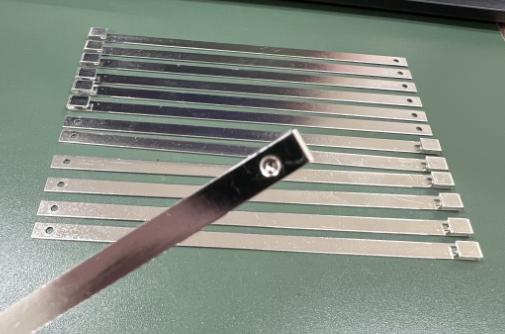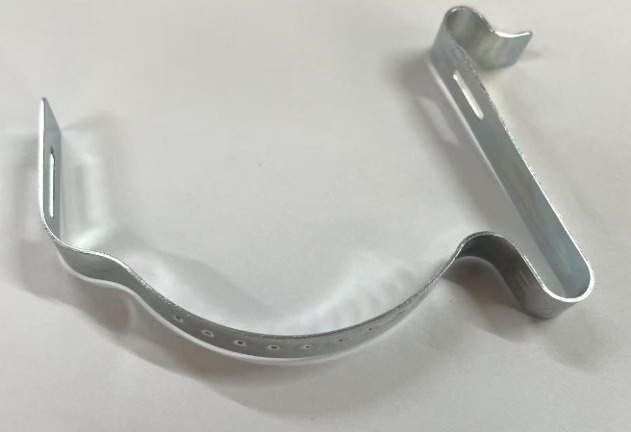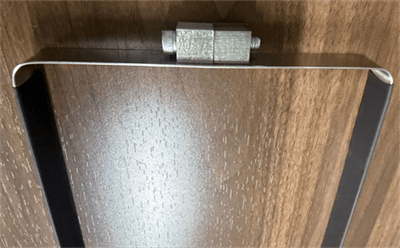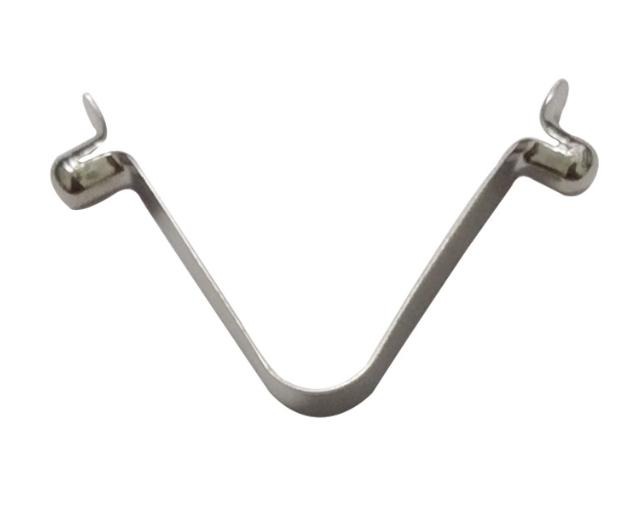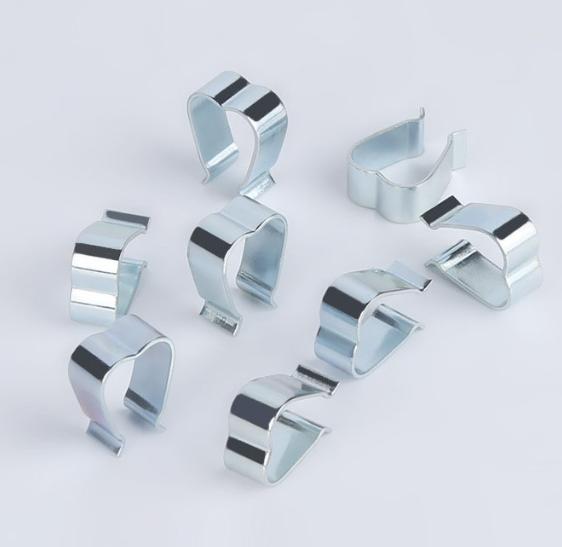Progressive Die Innovations for Producing Complex Stamping Parts
Industries such as automotive, aerospace, electronics, and consumer goods have an increasing demand for complex precision-engineered stamping parts. These industries seek high production volumes while needing components with complex geometries, tight tolerances, and intricate shapes. To meet such requirements, progressive die stamping has improved considerably over recent years. Advanced innovations in progressive die design have resulted in unprecedented levels of complexity, rapidity, and precision in the construction of stamping parts.
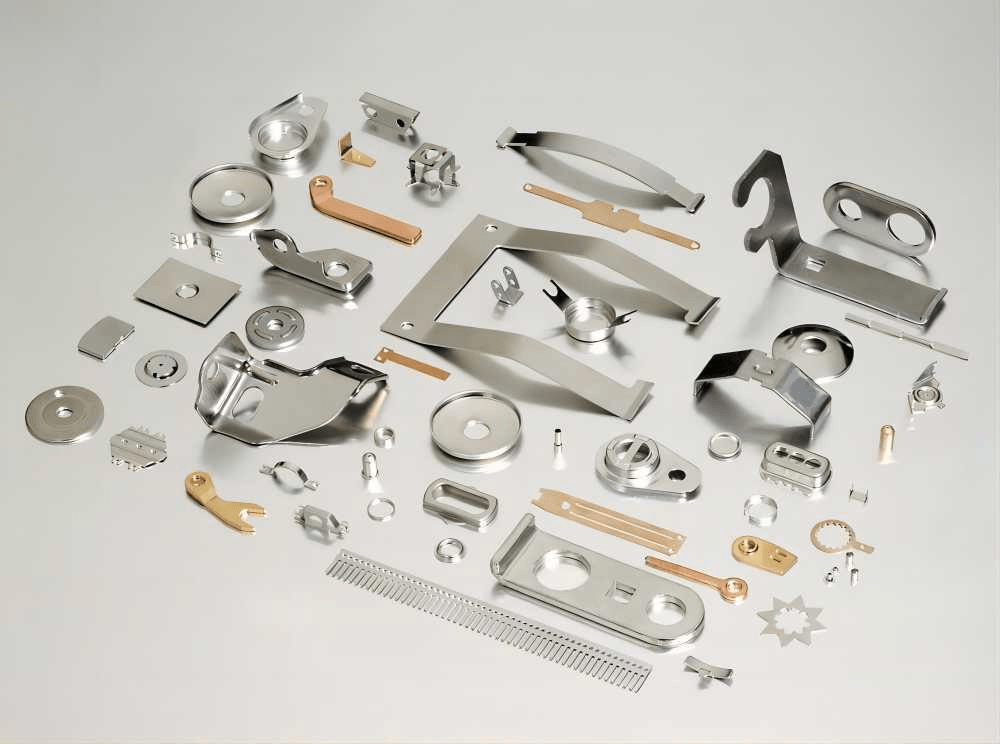
Table of Contents
Understanding Progressive Die Stamping for Complex Parts
Progressive die stamping is an automated, high-precision manufacturing technique that entails the continuous flow of metal strips through various stations of a die set. Each die set station is programmed to execute a specific task– punching, bending, or forming– until the part is completed. As it is possible to perform multiple actions and operations in a single pass, the progressive die system is both time and cost-efficient, making it particularly suited for high-volume production.
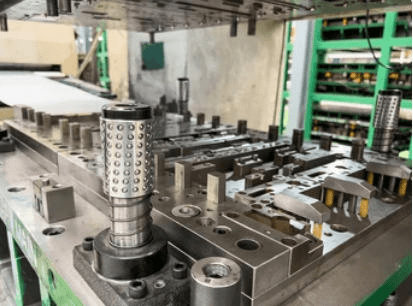
The demand for complex stamping parts with intricate shapes, deep-drawn features, or precision cutouts that defy the capabilities of conventional stamping systems is growing. The design of progressive dies to perform compound actions within a single sequence provides these systems with a decisive edge, allowing them to produce such parts with minimal material wastage and utmost precision.

Traditional Progressive Dies Used for the Production of Stamping Parts
| Component | Description | Limitations |
| Material Feed System | Mechanism to feed material (typically a coil of metal) through the die stations. | – Requires precise control of material tension. – Limited to strip-fed materials. |
| Cutting Station | The die that performs cutting or punching operations on the material. | – Limited to simple shapes. – Risk of burr formation. |
| Bending Station | The die that bends the material into the desired shape. | – Limited to simple bending angles. – May cause material thinning. |
| Forming Station | The die that forms the material into more complex shapes (e.g., deep drawing). | – Requires high force. – Risk of material wrinkling or tearing. |
| Piercing Station | The die that creates holes or cutouts in the material. | – Can only produce simple hole shapes. – Limited to thin materials. |
| Blanking Station | The die that removes a piece (blank) from a metal strip for further shaping. | – Limited to parts with simple shapes. – May result in scrap. |
| Die Inserts | Interchangeable components for adding different cutting or forming features. | – Must be carefully aligned. – Additional setup required for changeovers. |
| Material Removal | Scrap removal or material ejection after the operation. | – Increases complexity in die design. – Needs accurate timing to avoid part damage. |

Key Innovations in Progressive Dies Designed for Producing Complex Stamping Parts
There has been considerable advancement in the technology used in progressive die stamping. More intricate and complex shapes and features can now be produced. These innovations are not only improving the efficiency and quality of the stamping process but also expanding the range of parts that can be manufactured using progressive dies.
1. Multi-Functional Dies
Advanced features in progressive die design have the greatest impact in the introduction and use of multi-functional dies. Conventional dies in progressive stamping systems are designed such that each die station in the sequence of operations carries out one individual task of the sequence. The introduction of a stamping system that can execute several tasks in a single die set has transformed the production of intricate parts. Multi-functional dies make it possible to carry out a sequence of operations that include forming, embossing, and welding in a single stamping die.
This integrated system of production eliminates work and cuts down the steps a worker has to take in transporting stamped parts. For example, dies are able to execute multiple processes in a single sequence of operations. They can emboss identification features on a stamped part, bend the part, and perforate it in an single integrated cycle. The time in stamping production systems can be significantly reduced and part handling improved. Increased operational integration in stamping systems permits higher manufacturing flexibility. More complex and intricate details can be incorporated in a stamped part.

2. Advanced Tool Materials and Coatings
To meet the growing demand for complex metal stamped parts, traditional die materials are increasingly being replaced with high-performance tool steels and advanced coatings.
Here is a chart that outlines advanced tool materials and coatings used in progressive dies
| Tool Material/Coating | Description | Advantages | Applications |
| Tungsten Carbide | A highly durable and wear-resistant material, often used in high-stress die components. | – Excellent wear and abrasion resistance. – High hardness. – Superior performance in high-stress applications. | – Deep drawing stamping operations. – Cutting, punching, and forming in hard materials. |
| Tool Steel (High-Speed Steel) | A high-carbon steel alloy with excellent hardness and heat resistance. | – High toughness and durability. – Resistant to heat at high operating temperatures. | – General die applications. – Cutting, punching, and forming in medium to high-volume production. |
| PVD Coatings (Physical Vapor Deposition) | Thin coatings applied to die surfaces to enhance hardness, reduce friction, and prevent corrosion. | – Increased tool life. – Enhanced wear resistance. – Lower friction reduces heat generation. | – For high-speed stamping, fine blanking, and forming of complex parts. – Corrosive environments. |
| DLC Coatings (Diamond-Like Carbon) | Carbon-based coatings that offer diamond-like hardness and low friction. | – Extremely low friction. – Excellent wear and corrosion resistance. – Improved heat resistance. | – Used for cutting, forming, and stamping with high-speed and precision demands. |
| Ceramic Coatings | Non-metallic coatings that provide excellent hardness and thermal resistance. | – Excellent high-temperature resistance. – Reduces wear and extends die life. | – Ideal for high-temperature operations and materials with high hardness. – Forming and deep drawing. |
| TiN Coatings (Titanium Nitride) | A hard coating commonly used for improving wear resistance. | – Harder than most tool steels. – High resistance to heat and corrosion. – Excellent for high-volume operations. | – High-speed punching and forming. – Suitable for parts with high wear and heat generation. |
| CrN Coatings (Chromium Nitride) | A coating that provides enhanced wear and corrosion resistance, with lower friction. | – Superior resistance to wear and corrosion. – Reduces tool friction. – Improves part quality. | – Ideal for stamping, particularly in forming applications involving abrasive materials. |
| AlCrN Coatings (Aluminum Chromium Nitride) | A coating that combines the benefits of aluminum and chromium for superior heat resistance. | – Extremely high thermal stability. – Excellent for high-speed stamping. – Enhanced wear resistance. | – Used in high-temperature, high-speed stamping operations. – Ideal for automotive and aerospace industries. |
| TiAlN Coatings (Titanium Aluminum Nitride) | A coating that combines titanium and aluminum to provide high hardness and heat resistance. | – Very high oxidation resistance. – Extremely durable at high temperatures. – Improved cutting ability. | – Cutting and stamping operations requiring high-temperature resistance. – For hard materials and heavy-duty use. |
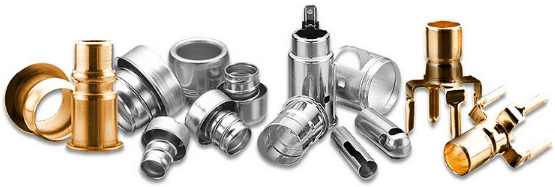
These innovations help reduce maintenance, improve part quality and enable the production of stamping parts with intricate features.
3. Sensor Integration and Real-Time Monitoring
Possibly, the biggest advancement in the dies technology, is the installation of smart sensors in the dies themselves. Unlike the current stamping operations, which are monitored in real-time, stamping operations used to be monitored in a manual, and therefore, in a highly inefficient, delaying the monitoring of the stamping operations, and thus, in a snapping dies monitoring in a stamping operation inefficient and delaying the monitoring of the stamping motor. It is now possible to embed force, temperature, and vibration sensors in the dies and to monitor the stamping operation in real-time.
Please consider as an example, devices to monitor force, which measure the pressure applied on the material and alert the operator in case something is wrong, for example, if the material is die is misaligned or material inconsistencies are present. Equally, temperature devices to monitor for excessive heat in die deep-drawing operations that can cause die damage. Unexpected breakdowns and die performance optimally active the predicted maintenance functions. Parts are less likely to have defects and overall part quality is enhanced. This technology, in monitoring real-time stamping operations to die produces complex parts within the tight tolerances.
4. Servo-Driven Presses
The introduction of servo-driven presses has revolutionized the practice of progressive die stamping. Unlike older mechanically operated presses, which have a rigid rotor and are limited to repetitive works, servo presses achieve variable speeds and programmable control over electro-mechanical units. This level of control was reserved for laser die stamping, but with the introduction of servo presses, complex dies with variable profiles may be stamped mechanically. Advanced geometric configurations may be achieved in a single stamping operation, overcoming the traditionally complex configurations that required multi-step stamping.
The highly configurable stamping operation is invaluable in parts that have multi-dies and complex bending. The dies can be calibrated to adjust to various techniques that are required in bending and forming Different. not only are the configurations extensive, but they are also produced with servo accuracy, which significantly reduces scrap metal loss. This adaptability for various designs has also improved the potential to control balance and force in complex designs with intricate details. The presses may be transformed to a new design in a matter of minutes, which helps in mass production of designs that are not uniform.
5. Modular Die Systems
Modular die systems have become a key innovation in progressive die stamping as the need for customization and rapid adaptation grows. Modular dies are made up of interchangeable components that can be easily adjusted to fit different part designs or material specifications. This adaptability enables manufacturers to quickly modify the stamping die to address changes in production, thereby lowering the time and expenses associated with designing entirely new dies for every new part.
The exceptional flexibility and rapid response capability of the modular die systems to changes in product design, material thickness, and production volume rank them among the most versatile systems for complex metal stamping parts. The modular systems become indispensable for the automotive and consumer electronics industries, which rank among the most responsive to rapid design changes and tight production schedules.

6. Integrated Cooling Systems
Deep drawing and stamping are complex processes that are prone to generating excessive heat, which, if not properly controlled, may lead to material distortion, tool wear, and poor quality parts. Integrated cooling systems have become an essential innovation in progressive dies systems. Integrated systems maintain stamping die temperature within operational bounds by using embedded cooling channels to help eliminate the heat generated during the stamping operation.
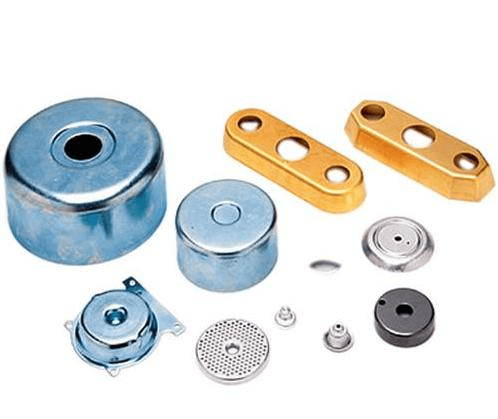
During the entire production cycle, these systems guarantee that the die temperature is maintained optimally, ensuring that the material flows appropriately, and the die operates at maximum efficiency. Designed to counter the effects of overheating, the systems easily mitigate problems like thermal expansion or warping. These problems become particularly cumbersome in the production of intricate parts that demand a high degree of precision. Furthermore, the systems improved the consistency and quality of the finished stamped products while reducing die wear and increasing the die lifespan.

The Benefits of Progressive Die Innovations for Complex Stamping Parts
Increased Complexity Without Sacrificing Efficiency
Incorporating multi-functional dies, servo-driven presses, and innovative die design software has enhances productivity in the manufacture of sophisticated parts. This innovation allows for the seamless integration of sophisticated characteristics and structures, all while capitalizing on the cost and time efficiency that is characteristic of progressive die stamping. This is particularly important in the automotive industry, where the demand for sophisticated components is often a metal for functional and aesthetic purposes.
Improved Part Quality and Precision
Precision sensors, advanced cooling systems and real-time monitoring systems allow for more accurate and consistent production of parts. Complex stamped parts which often require intricate features and tight tolerances, innovations in progressive die technology are able to help fulfill these needs. Up close monitoring of the production process allows for the intervention of quality degrading issues in real time and the avoidance of defects.
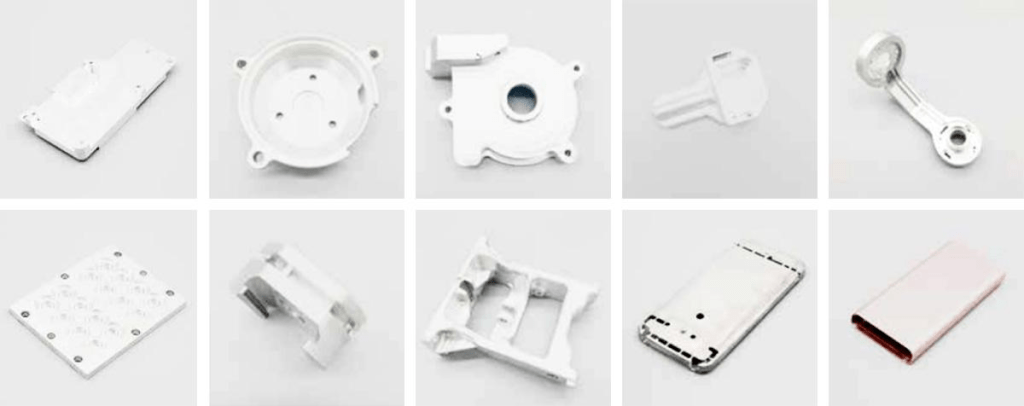
Reduced Production Costs
Long-term benefits of the investments in servo automation systems and advanced die materials outweigh the initial drawbacks. Reduction of die wear, elimination of post-stamping finishing, and reduction of material waste are some of the benefits of such investments. Process efficiency is achieved by the ability to perform numerous operations within a single die, diminishing handling time, tooling expenses, and cycle time, ultimately augmenting the overall process economically.
Greater Flexibility and Customization
The ability to rapidly switch between part designs and adjust production processes to dynamic demands is crucial in the low-volume, high-complexity production of customized stamping parts. Modular die systems and servo-driven automation in contemporary pressing technology contribute to such capabilities. This is particularly necessary in sectors with frequent design alterations.
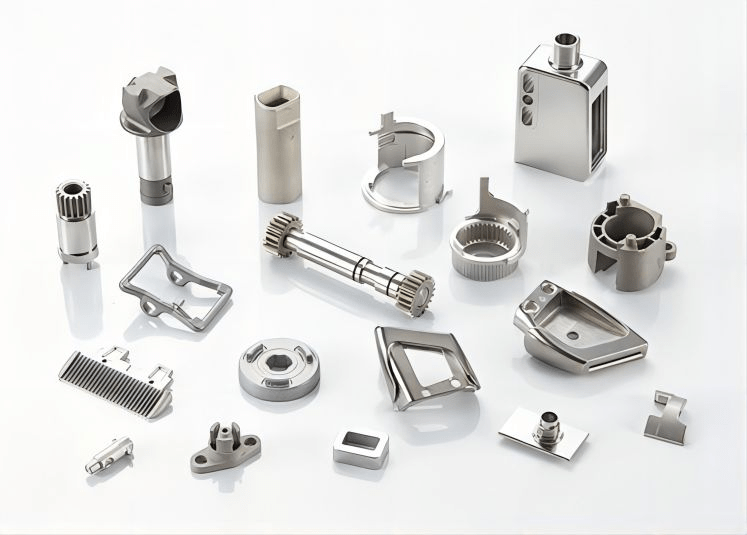
Future Outlook of Progressive Dies for Complex Stamping Parts
Progressive die stamping continues to grow in its ability to produce complex metal stamping parts in a more cost-effective manner. Increases in demand for more complex and high-performance components continues to grow. Therefore, the future of this technology will be influenced by several key trends.
Increased Integration of Automation and Digital Technologies
The increase of automation in progressive die stamping will expand the use of AI and other cutting edge technologies. Designed to collect, analyze and act on real-time performance data, AI systems will permit in-process adjustments on stamping and other operations. Automated systems will become more sophisticated in sorting, handling, transferring, and performing quality checks on the parts. The need for manual operation will be significantly diminished, resulting in faster, less variable, and more accurate completion of complex stamped parts.
In addition, adopting Industry 4.0 technologies, including IoT-driven machinery, will construct smarter die systems that predict problems, conduct remote diagnostics, and fine-tune operational parameters for quality enhancement. Predictive maintenance and sophisticated monitoring will mitigate downtime and bolster overall efficiency.
Smart Dies with Embedded Sensors and IoT Capabilities
Progressive dies may incorporate even more advanced intelligent dies that include sensors and staff IoT connectivity, which is one of the more exciting possibilities for the evolution of progressive dies. These sensors measure and log vital stamping parameters: temperature, pressure, strain, and force. This streamlining offers real-time updates.
The integration of advanced machine learning predictive algorithms will know process patterns and dynamically optimize stamping. This will provide added value to the process and provide the necessary transition to the more complex parts that will have more intricate contours and tighter tolerances.
Sustainable Practices and Environmentally Friendly Dies
Sustainability will be a growing focus in progressive die stamping. Due to the increased focus on environmental responsibility, manufacturers will be turning toward green manufacturing and the incorporation of recycled materials for die construction. Technologies available to the stamping process will become more energy-efficient and better reduce the carbon footprints of stamping processes.
The use of lubricants and cooling fluids that are biodegradable and environmentally friendly will lessen the ecological effects of cooling and lubricating dies. The use of additive manufacturing, more specifically 3D printing, for die production will foster more functional and sustainable dies, as 3D printing facilitates minimizing waste in the production process and allows for more precise, optimized die components.
Advanced Simulation and Digital Twin Technologies
The future of progressive die stamping will be influenced by the advancement of simulation technologies. Digital twin technology, where a virtual replica of a die and stamping process is created and continuously updated in real-time, will allow manufacturers to simulate the entire stamping process before any physical tooling is made.
Engineering predictive capabilities will streamline troubleshooting, die geometry optimization, and material flow analyses, ensuring the die operates effectively amid substantial intricacies. The virtual testing of multiple designs and processes leads to a remarkable decrease in time and expenses by alleviating the need for testing in a trial-and-error approach. The increasing sophistication and widespread availability of simulation technologies will become pivotal in die design, especially for complex components and a varied range of materials.
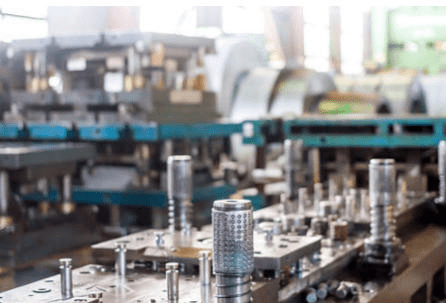
Final Thoughts
The innovations in progressive dies have made it possible to manufacture stamping parts that are not only complex but also of exceptional accuracy and refined to higher efficiency. The integration of high-end tool materials, real-time tracking, multifunctionality, and precision robotic systems has enabled the flexibility demanded by the sectors relying on detailed metal fabrication. The increase in quality and intricacy of stamped sections and the simultaneous decrease in cost of production created a unique-competitive environment for enterprises in contemporary production ecosystems.

